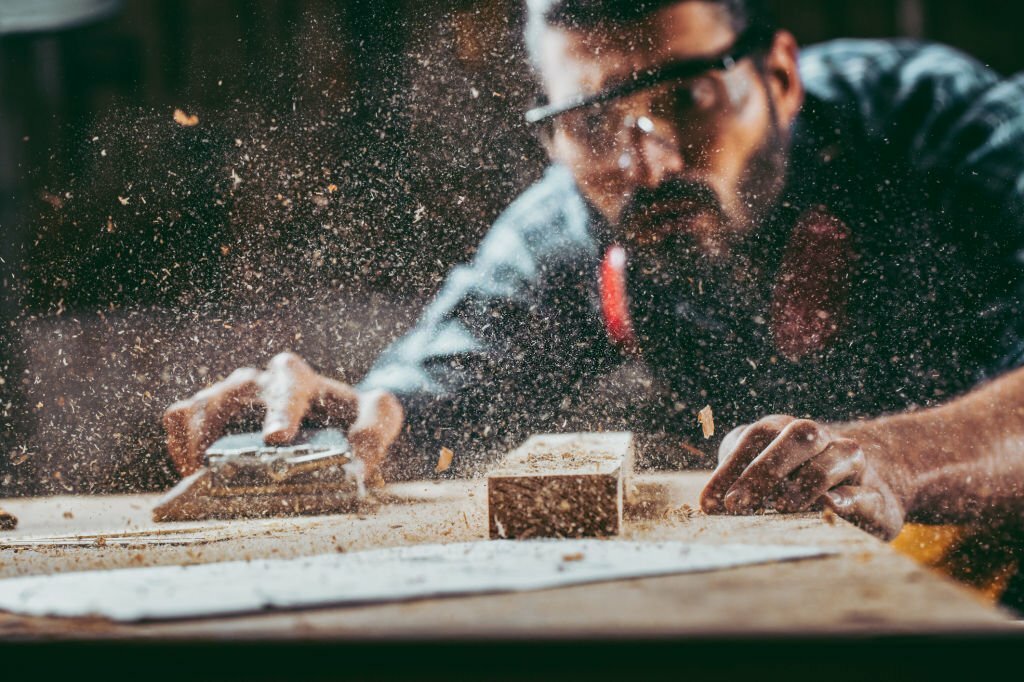Beginners must choose the correct wood for woodworking. Each wood variety has unique qualities that affect project outcome and ease of use. This article covers the top 10 woods for beginners.
First is Pine, a popular choice for its cost and availability. Light-colored and easy to work with, it may be stained or painted to complement any style. Another good choice for carving and complex work is basswood, which is soft and smooth.
Poplar wood is cheap, versatile, and easy to deal with. It’s soft yellow and easily painted or stained. Next is Balsa, a lightweight wood ideal for models and prototypes.
Durable cedar resists deterioration and insects. Its lovely scent makes it a popular outdoor furniture choice. Fir is strong and affordable, making it ideal for structural work.
Maple is a strong wood used for flooring and furniture. However, oak’s lovely grain pattern makes it popular for cabinets and carpentry.
Cherry is a premium reddish-brown wood. Its smooth texture and ease of use make it ideal for furniture manufacturing. Finally, walnut is a dark, rich wood with beauty and strength. It is used for exquisite woodworking and decoration.
Choose the proper wood for your projects to improve your woodworking skills and create beautiful objects. For beginners and experts alike, these top 10 wood kinds will lay the groundwork for your woodworking journey.
1. Pine

Image: iStockphoto
| Characteristic | Description |
|---|---|
| Color | Pale yellow or light brown, sometimes with a reddish tint |
| Grain | Straight grain with a relatively even texture |
| Density | Less dense than hardwoods, as pine is a softwood |
| Common Types | Eastern White Pine, Southern Yellow Pine, Ponderosa Pine, Lodgepole Pine |
| Uses | Construction (framing, sheathing, subflooring), furniture, cabinets, crafting, decorative items |
| Treatment | Often treated for improved durability and resistance to insects and decay |
| Sustainability | Fast-growing tree, many pine forests managed sustainably |
| Special Feature | Some pine species produce resin used for varnishes, adhesives, and traditional medicines |
Beginners in woodworking choose pine for its cost and availability. This light-colored softwood is easy to work with and ideal for beginners. Straight grain and consistent texture characterise pine.
Pine’s adaptability is an asset. Easy to cut, shape, and sand, it’s excellent for many crafts. It holds nails and screws well, making assembly straightforward.
Pine absorbs finishes uniformly and has a smooth surface, making it ideal for staining and painting. Knots can give pine a particular character. Others may fill knots in their work for a more polished look.
Pine is a wood beginners may experiment with and learn from. Starting woodworkers should choose it for its price, availability, and ease of use.
2. Basswood
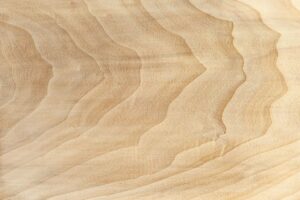
Image: iStockphoto
Beginners in woodworking should also choose basswood. Lighter wood with a mild colour is easy to work with and suitable for beginners.
| Characteristic | Description |
|---|---|
| Color | Pale white to light brown, with a sometimes creamy hue |
| Grain | Straight and fine grain, uniform texture |
| Density | Lightweight and soft, making it easy to work with |
| Workability | Excellent carving and shaping properties |
| Uses | Carving, millwork, cabinetry, musical instruments, carving blocks for artists |
| Durability | Low to moderate durability, less resistant to decay and insects compared to some hardwoods |
| Stability | Stable wood with minimal movement in response to changes in moisture and temperature |
| Finishing | Accepts finishes and stains well |
| Sustainability | Grows relatively quickly, considered a sustainable wood source |
| Special Considerations | Prone to denting and scratching due to its soft nature |
Basswood’s suppleness makes cutting, contouring, and carving easy. Woodcarvers and hobbyists who like detailed designs love it. Smooth finishing are easy with its delicate, straight grain.
Basswood is stable and warp-resistant, making it perfect for precise measurements and longevity. It resists splitting, which is another benefit for beginners trying new joinery techniques.
Another benefit of basswood is its cost and availability. Most lumberyards and home improvement stores carry it, making woodworking tasks easy.
Basswood’s versatility, ease of use, and availability make it ideal for beginner woodworkers. Basswood helps you learn and make wonderful crafts, from little to huge.
3. Poplar

Image Credit: iStockphoto
Beginner woodworkers should also consider poplar. The lightweight, supple wood is easy to work with and handle. Straight, even grain makes poplar ideal for clean cuts and smooth finishes.
Poplar’s affordability is a major benefit. It’s cheaper than other woods, making it a good choice for novices. Many lumberyards and home improvement stores sell poplar, making it easy to use for woodworking.
Another virtue of poplar is adaptability. Furniture, cabinets, trim, and musical instruments can be made from it. Poplar takes stains and finishes effectively, helping woodworkers achieve their desired look.
Poplar is a suitable wood for beginners who are practising woodworking, however it is less durable than some hardwoods. This wood may be easily restored and forgives faults.
Poplar is affordable, versatile, and easy to utilise, making it a good wood for beginners. It is ideal for novice woodworkers who want to gain experience and confidence.
4. Balsa
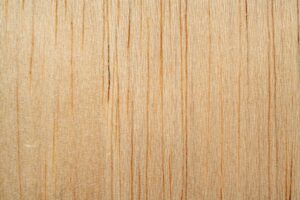
Image Credit: iStockphoto
Balsa wood is lightweight and easy to deal with, making it a favourite starter material. It is one of the lightest woods due to its low density. This site is ideal for projects that demand manoeuvrability and delicate craftsmanship.
The delicate texture of balsa wood is an advantage. Beginners can practise woodworking methods because it’s easy to cut, shape, and sand. Balsa wood’s straight, flat grain makes it suitable for clean cuts and smooth finishes.
Another virtue of balsa wood is its price. It is cheaper than other hardwoods, making it a good choice for novices. Most craft stores and internet retailers sell balsa wood, making it easy to work with.
Although less durable than oak or maple, balsa wood is strong and stable for tiny projects. It is used to make models, toys, and miniature furniture.
Due to its lightweight, ease workability, affordability, and availability, balsa wood is a great starting wood. Beginner woodworkers can practise and create attractive creations.
5. Cedar
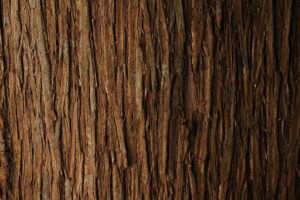
Image Credit: iStockphoto
Cedar wood is another great wood for beginners. Its elegant reddish-brown colour and scent give sophistication to any project. Softwoods like cedar are easy to deal with. Lightweight makes it easy to handle and manoeuvre during creating.
| Characteristic | Description |
|---|---|
| Color | Reddish to light brown, with a distinct aromatic fragrance |
| Grain | Straight grain, often with a uniform texture |
| Density | Moderate density, falling between softwoods and hardwoods |
| Aroma | Natural aromatic scent, which can act as a natural insect repellent |
| Durability | High natural resistance to decay and insects |
| Uses | Outdoor construction (decking, siding), indoor paneling, closets, chests, furniture |
| Workability | Easy to work with, though it may have some variability in density |
| Stability | Relatively stable, with low shrinkage and swelling |
| Finishing | Takes finishes and stains well, though its natural oils can affect adhesion |
| Sustainability | Cedar is often sourced sustainably, with some species being grown for this purpose |
| Special Feature | Aromatic oils in cedar act as a natural insect repellent |
Cedar wood resists rot and insects, making it stand out. This makes it ideal for garden furniture and decorations. Beginners wishing to construct durable, beautiful objects choose cedar for its sturdiness and natural beauty.
Cedar wood is stable and durable. Despite moisture and temperature changes, it does not shrink or distort. This helps beginners make precise cuts and produce professional-looking goods.
Cedar wood is readily available and affordable, making it accessible to budget-conscious newcomers. It may be used for everything from little crafts to massive furniture.
Cedar wood’s workability, durability, stability, and aesthetics make it a great choice for novices. Cedar wood will enhance your woodworking creations, indoors or out.
6. Fir
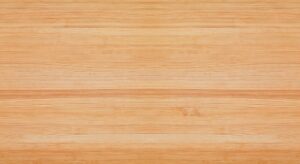
Image Credit: iStockphoto
Beginner woodworkers choose fir wood for its versatility and availability. Due to its light colour and even grain pattern, this softwood is easy to work with and create beautiful items.
Fir wood is known for its strength-to-weight ratio. Despite being lightweight, it is very sturdy and can survive rigorous use. This makes it ideal for furniture-making, decking, and fence.
Fir wood resists deterioration and insects, making it ideal for interior and outdoor projects. This makes it a good alternative for beginners who wish to produce durable objects.
Fir wood is cheap and abundantly available, making it accessible to budget-conscious newcomers. It is readily available in various sizes and cuts, making it suitable for numerous woodworking applications.
Due to its durability, adaptability, and ease of use, fir wood is a great starting material. Fir wood is a durable and attractive material for furniture and outdoor projects.
7. Maple
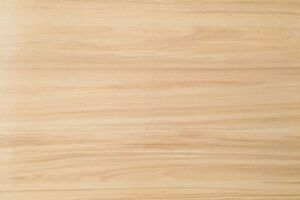
Image Credit: iStockphoto
Maple wood is another great starter wood. Durability, robustness, and gorgeous grain patterns define this timber. Woodworkers who desire to construct beautiful objects like its light colour and smooth feel.
Maple is known for its stability. It is less likely to warp or shrink than other woods, making it easier to work with and preserving your efforts for years.
| Characteristic | Description |
|---|---|
| Color | Light to medium brown, sometimes with a reddish tint |
| Grain | Straight grain with occasional wavy patterns |
| Density | Hardwood with a moderate to high density |
| Hardness | Known for its hardness and resistance to wear and tear |
| Workability | Generally easy to work with, though density can vary between species |
| Stability | Relatively stable, with minimal shrinkage and swelling |
| Finishing | Takes finishes and stains well, providing a smooth, even appearance |
| Uses | Furniture, cabinetry, flooring, musical instruments, cutting boards |
| Special Considerations | May have variations in color and grain depending on the species (e.g., Hard Maple vs. Soft Maple) |
| Sustainability | Some maple species are sourced sustainably, and efforts are made to manage forests responsibly |
Maple wood is versatile and may be used for many woodworking projects. Used for furniture, flooring, cabinetry, and musical instruments. The fine grain and close texture make it perfect for complex carvings and motifs.
Maple wood is mid-range, making it affordable for beginners who are ready to spend more on woodworking supplies. It comes in many sizes and cuts, making it easier to choose the correct parts for your project.
Maple wood is a great option for novices who want something robust and adaptable. Stability, attractive grain, and versatility make it a favourite choice for woodworkers of all abilities.
8. Oak
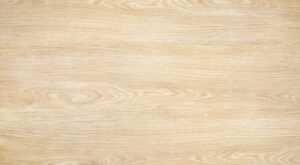
Image Credit: iStockphoto
Beginner woodworkers choose oak wood for its versatility and durability. Furniture and other items that demand durable materials benefit from this hardwood’s strength and durability.
Oak wood grain patterns are stunning. Oak’s grain gives any work individuality and beauty. Oak comes in light to dark tones, allowing for unique woodworking projects.
Oak is easy to work with for novices. Good workability and no splitting or chipping when sawed or drilled. This makes it a great wood for beginners who want something forgiving and easy to handle.
Oak costs mid-to-high. It costs more than other woods, but its durability and beauty make it worth it. Oak’s many sizes and cuts make it suitable for many tasks.
Oak wood is a great option for novices who want something adaptable and sturdy. Its gorgeous grain, ease of workability, and versatility make it a trusted choice for woodworkers of all abilities.
9. Cherry
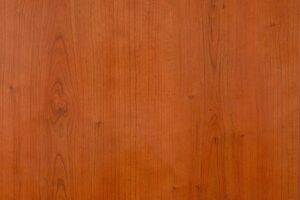
Image Credit: iStockphoto
Cherry wood is another great starter wood. Its rich, warm tones and lovely grain patterns provide refinement to any project. Cherry is easier to work with than other hardwoods, making it popular with beginners.
Cherry wood is known for its decay and rot resistance. This makes it suitable for patio furniture and decks. Cherry wood is robust and can resist constant usage, making it ideal for furniture that has to last.
Cherry wood matures nicely, turning reddish-brown. Cherry wood projects gain character and depth from natural ageing. Cherry is also lighter than other hardwoods, making it easier to work with.
Cherry wood can be more expensive than other woods. Popularity and limited availability raise its price. Cherry wood is worth the investment for woodworking aficionados of all levels due to its distinctive beauty and adaptability.
Cherry wood is durable and appealing, making it a great choice for cabinets, tables, and decorations.
10. Walnut

Image Credit: iStockphoto
Walnut is another great starter wood. Its rich dark brown colour and attractive grain patterns give woodworking projects depth and character.
Durability and strength are hallmarks of walnut wood. The hardwood resists warping and shrinking, making it perfect for furniture and other tasks that need to last. Walnut is also easy to mould and carve.
Natural beauty distinguishes walnut. Some pieces have lighter sapwood and darker heartwood, giving a remarkable grain contrast in the dark chocolate brown colour. Walnut age beautifully, developing a rich patina.
Although walnut is more expensive than other woods, its beauty and adaptability make it worth it. Walnut wood elevates woodworking products including cabinets, tables, and decorations.
Conclusion
In conclusion, branding is a critical component of building a successful business. It allows you to distinguish yourself from your competitors, convey your unique values and story, and create a strong and reliable brand identity. By investing in branding, you can effectively communicate with your target audience and build trust and loyalty.
To brand your business effectively, start by understanding your target audience and their needs. This will help you shape your brand messaging and positioning. Develop a compelling brand identity, including a logo, color palette, and visual elements that align with your values and resonate with your audience.
Consistency is key when it comes to branding. Ensure that your brand messaging, visuals, and customer experience are aligned across all touchpoints, from your website to social media channels. This will help create a cohesive and memorable brand image.
Don’t forget to regularly evaluate and refine your branding efforts. Stay updated with market trends and customer preferences to ensure your brand remains relevant and impactful.
Remember, branding is not a one-time task but an ongoing process. It requires dedication, creativity, and consistency. By investing in branding, you can build a strong and recognizable brand that will set you apart from your competitors and attract loyal customers.

I’m James Brown, the founder and editor of DIYINUSE.COM. I have over 15 years of hands-on woodworking and DIY experience that I share through tips and project inspiration on my website. When I’m not working on home improvement projects or creating content for the site, I enjoy spending time outdoors hiking and fishing. I’m always looking to expand my creativity and DIY skills by learning new techniques.
